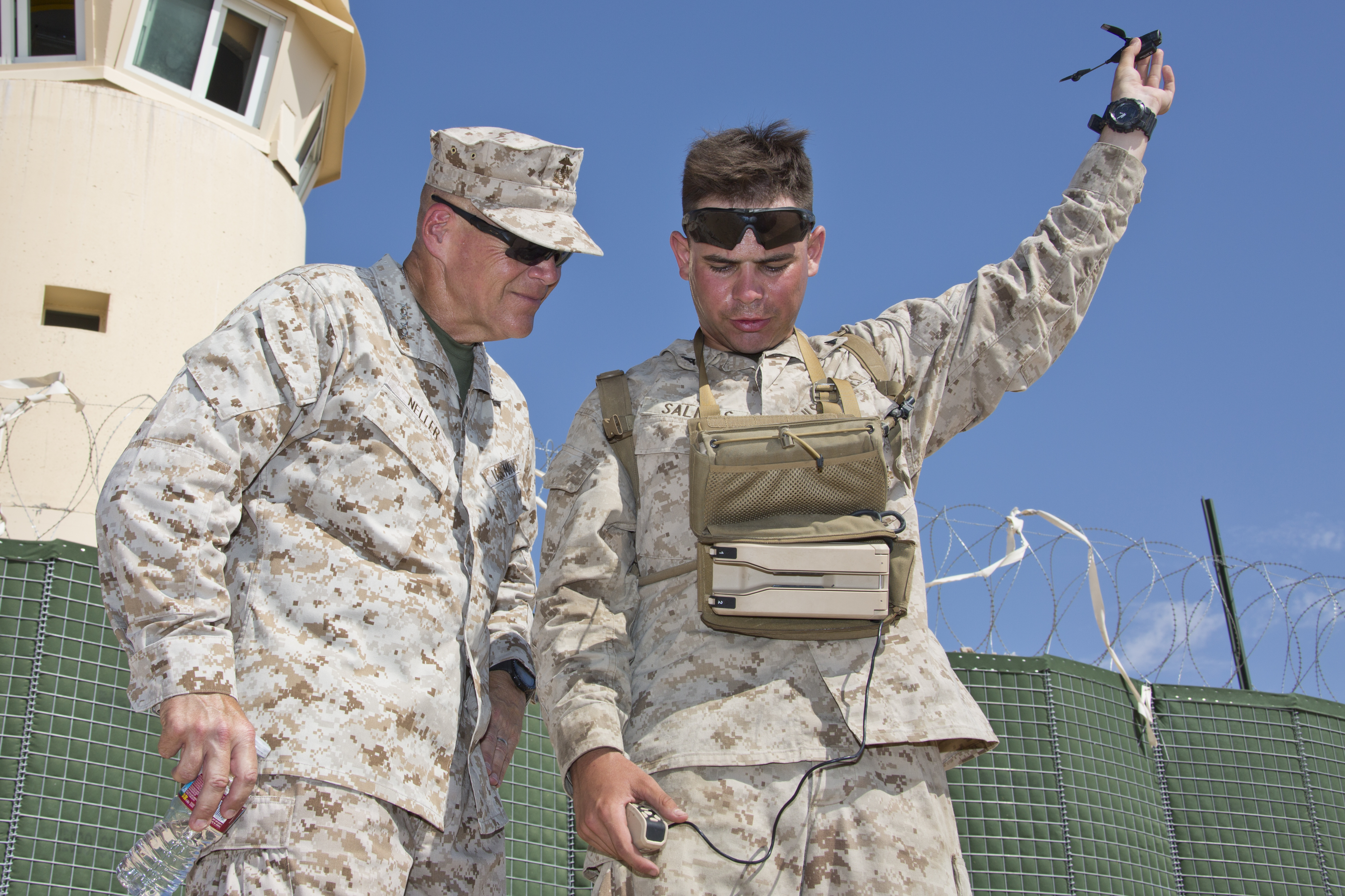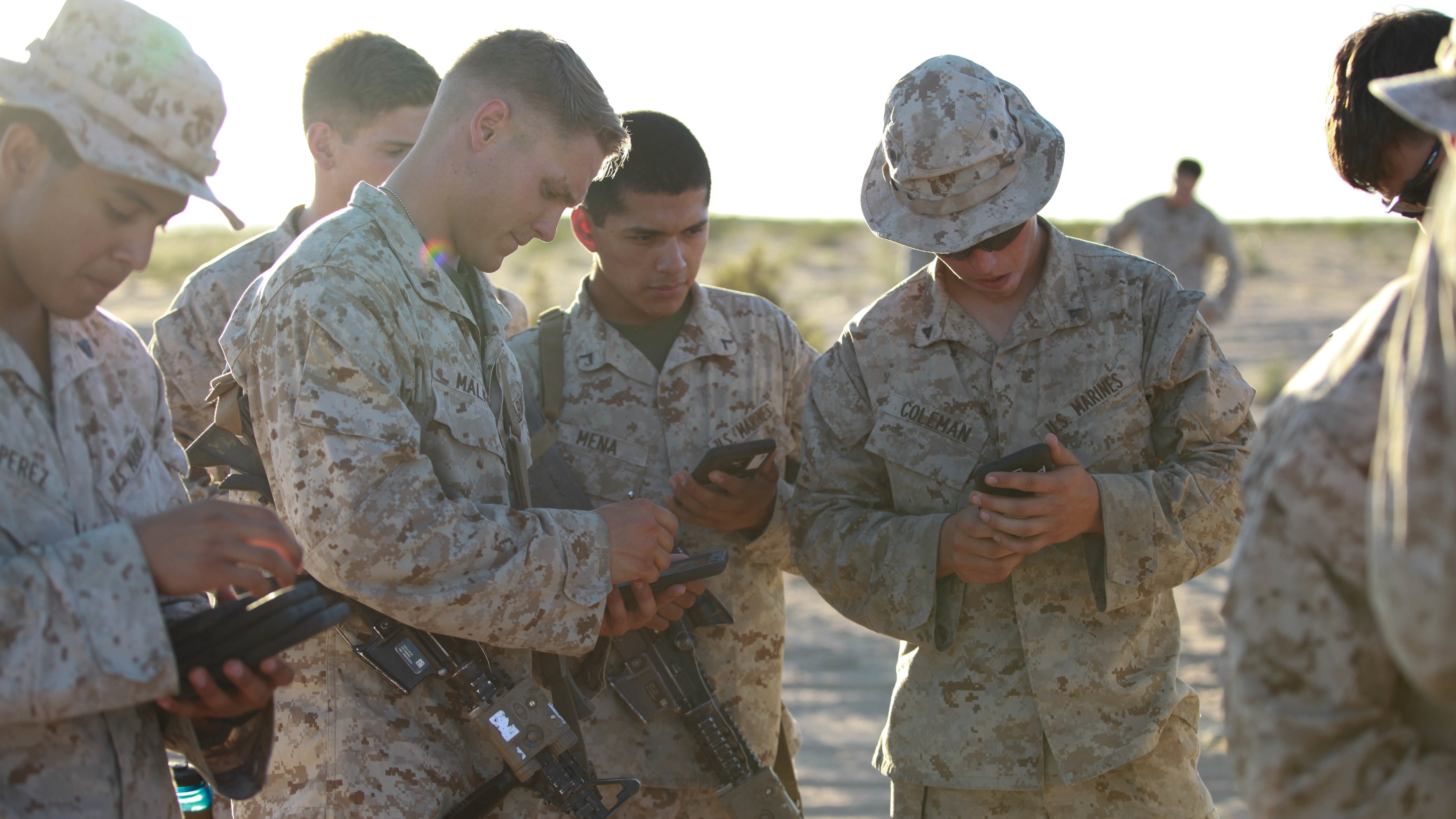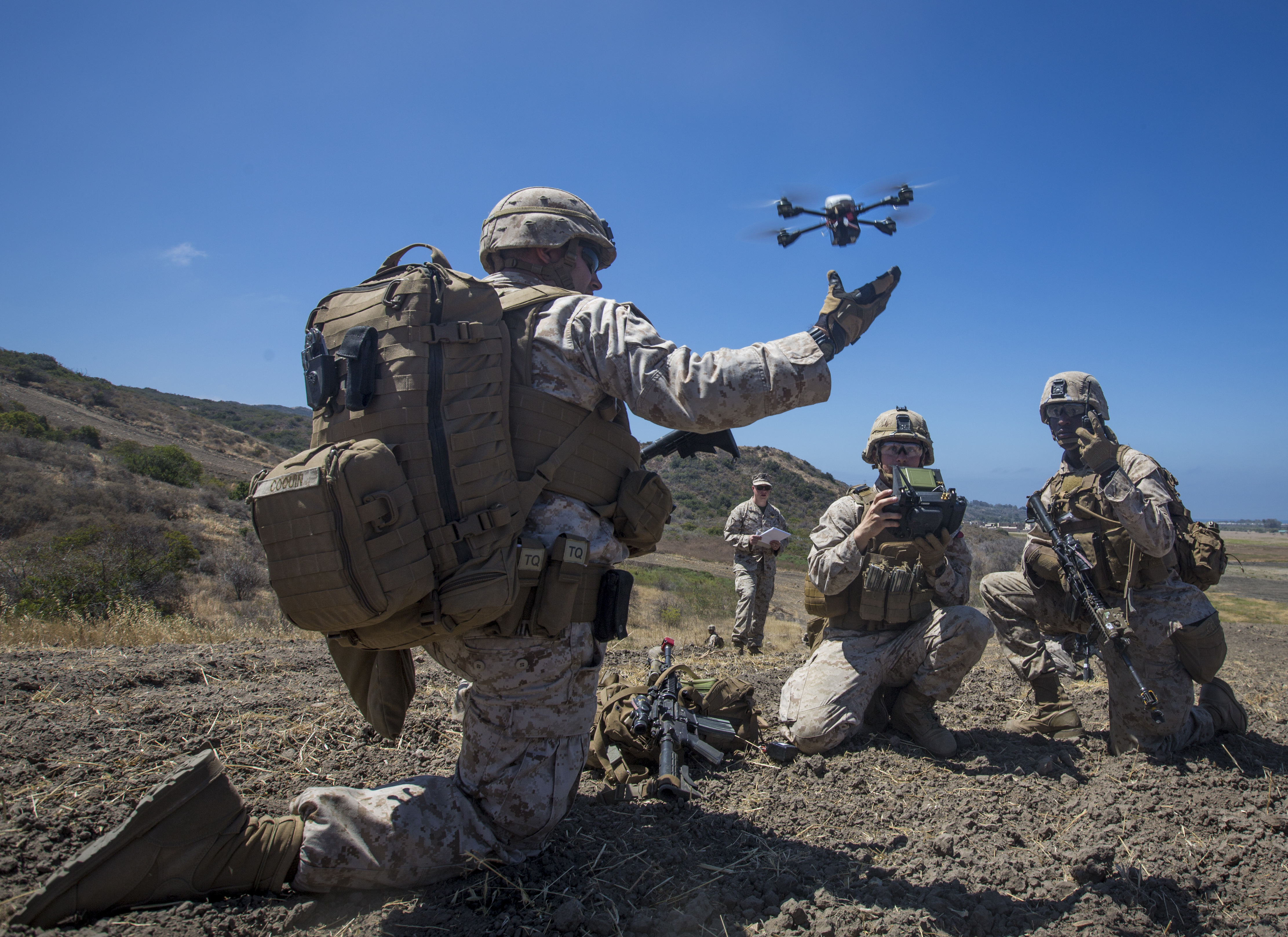
This post has been updated to correct the name of the Shoulder-launched Multipurpose Assault Weapon launcher Brig. Gen. Joseph Shrader refers to.
Marine Corps budgets in the coming years may be more focused on the company, platoon and squad levels, with the service trying to empower lower echelons that will operate with more independence in dispersed operations.
The service is going through a Marine Corps Force 2025 effort now to begin to shape the future force. Phase I ended with Commandant of the Marine Corps Gen. Robert Neller deciding that the service should plan to stay at a 182,000-Marine force, with more personnel shifted towards missions like cyber and information warfare. Other mission areas would be either reduced or shifted into the reserves to stay within the end strength, and changes to the size and organization of infantry units could be in store to keep this future force optimized for future warfighting requirements.
In Phase II, service leaders now have to figure out what that means in terms of the equipment they’ll need to buy and, more challenging, how to squeeze those priorities into an already-tight budget.
Budgeting the Future Force

Brig. Gen. Roger Turner, director of the Capabilities Development Directorate, said last week at the Modern Day Marine exposition that “we’ve kind of nailed down what we think the force design looks like, and we’re going to be moving forward with trying to implement these capabilities in the next several months,” with his staff hurrying to find solutions in time to inform the Program Objective Memorandum 2019 (POM 19) process.
Some aspects of how the Marine Corps prioritizes its resources won’t change, Turner made clear.
“Most of our investment is tied up in that [crisis response] capability, our ability to respond tonight, out ability to fight and produce capability well before the joint force can be postured and set the theater and that sort of thing,” he said during a “report to industry” panel presentation.
“That continues to be our wheelhouse and will continue to be our bread and butter going forward.”
The service will also ensure it has a two-Marine Expeditionary Brigade (MEB) force to respond to any major short-of-war contingency.
But, the Marine Corps Force 2025 effort may put a slightly new spin on the service’s priorities.
“We are trying to optimize that force to conduct those operations in the early days of a campaign, again before a joint force can be established and set the theater,” he said, noting that the service will focus its investments on those Marines closest to the enemy.
“If you look at it kind of across the range of military operations, we’re kind of focused at the center – crisis response and contingency – and then by echelon focused on units that are closest to the enemy. And those units are going to absorb the lion’s share of our investments.”
Turner told USNI News after the panel presentation that this emphasis on those closest to the fight, plus Neller’s decision to increase cyber and information warfare capabilities while maintaining a 182,000-man end strength, means trading “more traditional capabilities for some of these new advanced capabilities,” which will inevitably be seen in the budget requests in coming years. While he said he doesn’t have answers yet, he said people could expect to see an increase in spending on people and material for infantry, combat engineers, light armored reconnaissance (LAR) units and armor, as well as investments in the network and other enablers that allow for more sophisticated operations at lower echelons within these types of units.
Deputy Commandant for Combat Development and Integration Lt. Gen. Robert Walsh told reporters after the panel presentation that the new Marine Corps Operating Concept and its emphasis on maneuver warfare necessitates having well equipped small units that can move quickly and infiltrate enemy defenses.
“Maneuvering quickly and being dispersed is to our advantage, so (we’re) trying to get that technology down lower. And it’s getting cheaper, it’s getting smaller, and we’re able to push those things down lower,” Walsh told reporters.
“So we talked about the LAVs before, on having the capability where if they could launch a (unmanned aerial vehicle) out in front of them, wouldn’t it be a huge advantage? So they’re out there at the fringe already, if they could launch a UAV that could maybe sense (radio frequency) signals out front, that would be a huge indicator going back. We didn’t have those kinds of capabilities before; now those are starting to come into play.”
To achieve this vision, Walsh said that Turner and his group were given the freedom to look at even major acquisition programs and decide that, if they weren’t performing well or the service could make do with a smaller quantity, trims should be made to make room for these technologies for companies, platoons and squads.
Equipping the Future Force

Once room is made in the budget, the service has to identify what it is it wants to arm these smaller units with. Neller made clear that small UAVs are at the top of his list.
“At the end of next year, my goal is every deployed Marine infantry squad has got their own quadcopter,” he declared in a speech at Modern Day Marine.
Turner said during the panel that capabilities currently resident in larger UAVs are being pushed down into smaller and smaller air vehicles, particularly into Group 1 UAVs that weigh less than 20 pounds and Group 2 UAVs that weigh less than 55 pounds.
“As part of Force 2025 we’ve really built in Group 1 and Group 2 capabilities in almost all of our units now,” he said. “So what you’ll see is, as we mature this and as we figure out what we can afford, is essentially Group 1 capabilities integrated throughout the GCE (Ground Combat Element) and at the squad level, the platoon level, the company level, in the infantry reconnaissance teams, LAR units and the like. So a really vast improvement in the GCE’s ability to sense its local area and its local battlespace.”
Deputy Commandant for Plans, Policies and Operations Ronald Bailey added during the panel that he had several priorities: bringing counter-UAV and rocketry capabilities to the squad level, lightening the load the squad carries, and bringing mobile directed energy weapons to as low as the squad level if the technology is right.
Commanding General of Marine Corps Systems Command Brig. Gen. Joseph Shrader added to the list bringing more command and control and computer processing power to the tactical edge.
“It’s not just about the device that Marines hold in their hand or the device that they’re looking at, but it’s what backs up that, it’s all the stuff that’s behind that, the C2 that goes into that, and connecting all that through our network processes,” he said.
To find specific solutions to these requirements, Neller directed a Rapid Capabilities Office be stood up under the Marine Corps Warfighting Laboratory, Walsh said. Last month the RCO began its first online Innovation Portal challenge, asking Marines for their ideas on manned/unmanned teaming, robotics and autonomous systems.
Shrader said that, also under the RCO, the service kicked off an Infantry Equipping Challenge to look at how to better support specific military occupational specialties within the infantry.
“To this point, we’ve always looked at a common-to-all standard when it comes to equipping our individual Marines, off the concept that every Marine is a rifleman,” he explained.
“But to this point we really haven’t looked at taking that common-to-all load and unpacking it in terms of what each of those MOS’s need. There are 12 different MOS’s in the infantry. … The ones we’re initially focusing on now are the LAR Marines, our 0331 machine gunners, 0341 mortarmen, and the 51 assaultmen.
“You look at the assaultman and the SMAW (Shoulder-launched Multipurpose Assault Weapon) that they carry – the way that they carry it now is they just take that SMAW and they put it on top of their pack … and they strap it down because we don’t really have something designed, something simple designed to carry that SMAW launcher,” Shrader continued, describing a conversation with assaultmen he had at the kickoff of the Infantry Equipping Challenge.
“And the Marines said, sir, it takes me 30 to 45 seconds just to get that thing off the back of my pack just to engage. The infantrymen will tell you, 30 to 45 seconds, when they get into a fight, that’s a lifetime. So it’s small little things like that that will increase the individual Marine’s capability exponentially.”
About 70 vendors showed up to the kickoff event, and Shrader said future events would be held to cover the remaining infantry MOS’s. Priorities in this first round include water purification and filtration at the platoon, squad and individual level; rechargeable batteries and innovative recharging techniques; lighter-weight ammunition and ammo cans, as well as more innovative storage and bandoliers; infantry medical devices for corpsmen and for first aid kits; and food storage.





